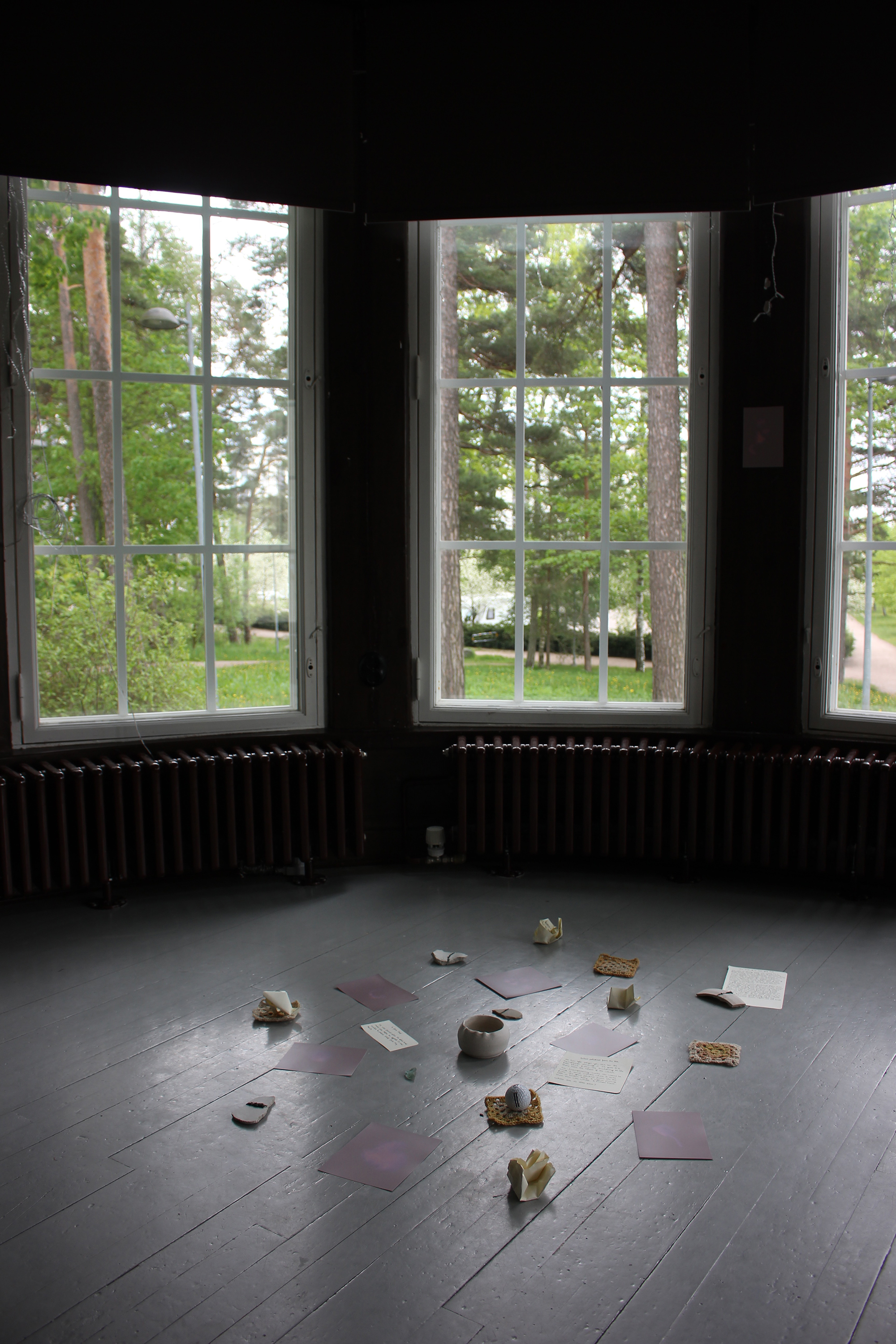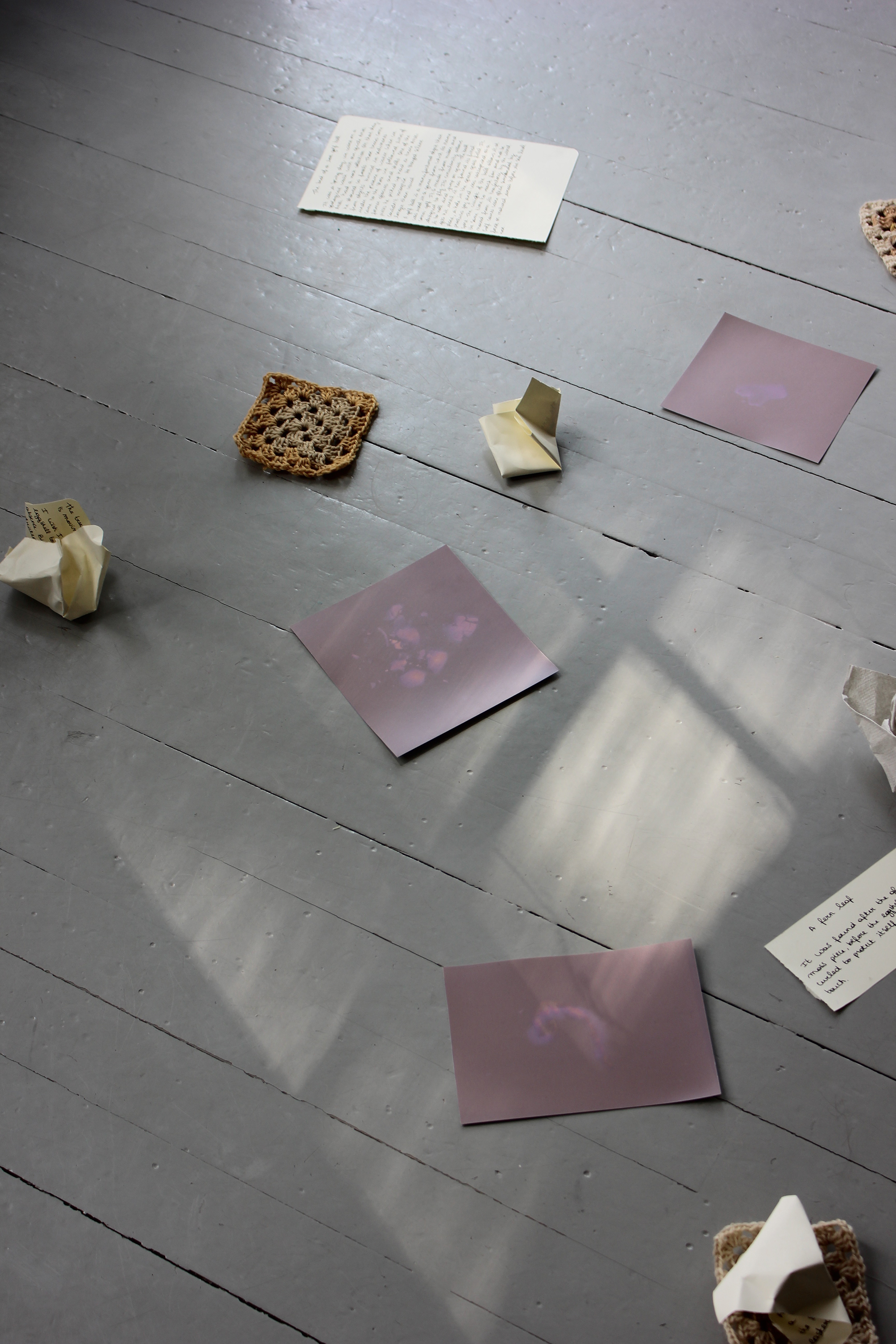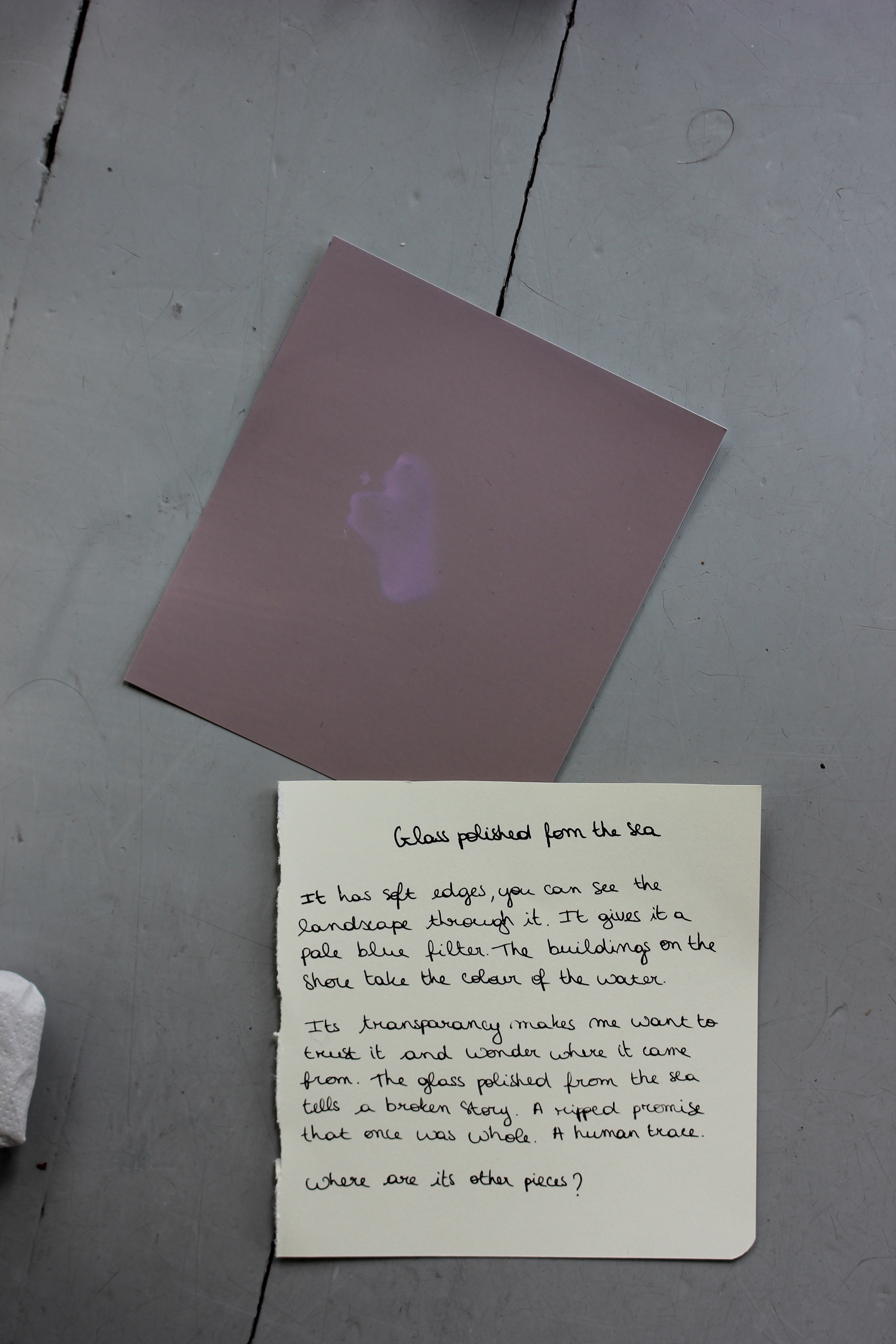waiting for the sheep
waiting for the sheep shared at Villa Lill Kallvik (Helsinki)


My first collaboration with sheep was during a project in Uutela (Helsinki), as part of a wider research on interspecies communication.
During that project, I was following the seasonality and movements of sheep. I knew that in the summer, farmers would bring their sheep to the green areas of Helsinki. There, they would spend the summer grassing before returning to the farm for the winter. In June, while I was waiting for the sheep to arrive, I wondered what the place and its more-than-humans inhabitants could tell me (plants, objects, animals about themselves, and about sheep). I found beings, voices and fragments of more-than-humans and started a correspondence with them. While I walked around the fence, waiting for the sheep, I attempted to connect with the place and its stories, situating myself as a human being. Along with those voices, I started writing fictional stories and imagining what they could tell me about the sheep-human relationship. Each of these collaborative stories made me dive deeper into the concepts of domestication, belonging, collectivity, place-making and interspecies relationships.
Sitting inside the empty pens, I felt at home. When the sheep finally arrived, I had familiarised myself with their space and could hear the songs of the birds, the sound of a snake on the dead leaves, and the trees changing their bark. During this encounter with sheep, I came closer to what belonging means through observing their collective and empathetic ways of being. I was learning from them, seeing them move as one and look back at me together while releasing bleats. Sheep have “become” with us through herding, domestication, farming, and breeding. At the end of the summer, the sheep disappeared again and it got me thinking: what if they wouldn’t come back?
These beings, materials and objects of Uutela made their way into my print with the sunshine, leaving their traces behind. They are alive, vibrating and moving towards their next encounter. Stepping outside the divide between humans and non-humans, in this project, I attempted to connect beyond what I can define, articulate and understand.
Where and how can we grieve a place that has been lost? The installation acts as a ceremony for the ones who have been forgotten, grieving together and listening to the stories of more-than-humans. It invites you to activate its components, read them, move them, let them move you. The installation includes: textile pieces with mushroom dyes, ceramic pieces repaired with mushroom pigment, visual traces (prints) of objects and written short stories.
It was performed at Villa Lill Kallvik as part of the Story Ecologies exhibition in Vuosaari, Helsinki (2023 FI) and published with CORA Journal (2024 CA).


